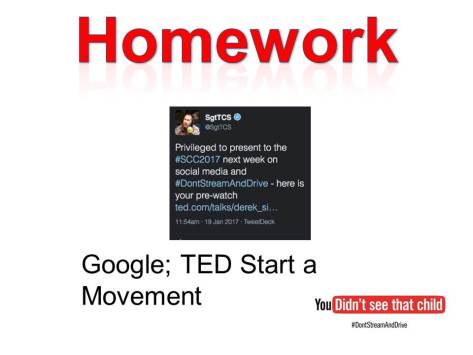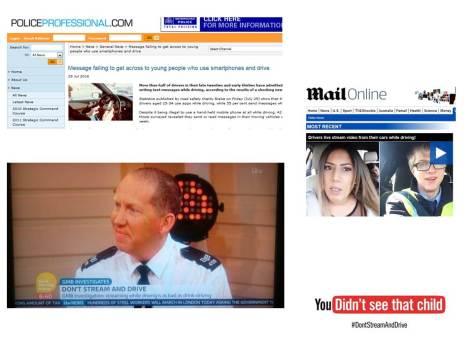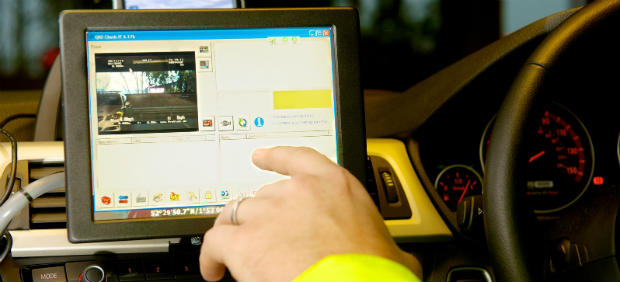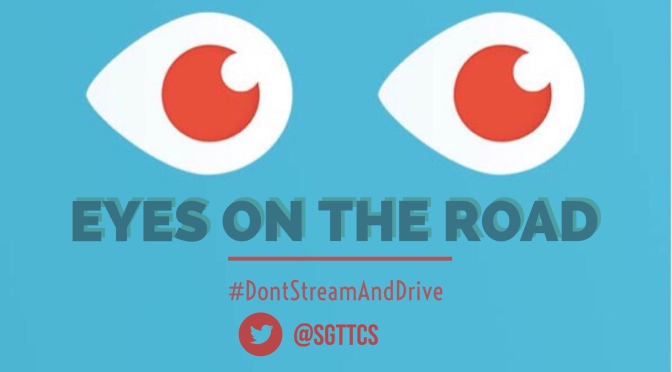This week I gave a very short presentation at work via video conferencing. My topic was on social media and diversification of content and platform. You can find what I said below.
Good afternoon everyone. For those of you that don’t know me my name is Neil Dewson-Smyth and I’m a Sgt working here at HQ in control room. I have been involved with force social media directly or indirectly since 2011. I’m also well known across the UK and around the world as @SgtTCS on Twitter. I was one the early police officer adopters who took to social media anonymously. From there I trod the precarious path of talking publicly about police work. A practice that was at the time frowned upon and caused all sorts of fear in forces around the country leading to discipline matters for many officers and staff.
Times have changed. I’m no longer anonymous and whilst I am not officially endorsed by Cheshire Police I am recognised and known as a police officer on Twitter across the UK and around the world. My #DontStreamAndDrive campaign has garnered the support of forces around the country, North America and the world. Ambulance, fire & rescue services, road safety organisations and the UK Govt THINK! Team have all given it their support. This years campaign was coordinated with NPCC Road Policing Lead. I have given presentations on this road safety issue at various conferences including NRPIF, TISPOL, NDORS and Road Safety Wales. In April this year I went to Los Angeles and won the ConnectedCops Social Media Leadership award. Social media has created opportunities for me that I never envisaged and allows me, in my own way, I hope, to make a difference as a police officer.
I did have some speakers lined up for you today from across the country and from Miami in the USA. Sadly, policing demands and technology compatibility issues made it too difficult to achieve. That said I do think it’s important to hear about the journeys other people have taken from their perspective and hear their success stories. This is a far more impactive way of showing you what can be achieved than just listening to me. I hope to be able to try to do this again soon.
So as I said, forces across the country are more relaxed about social media than they ever were. In force and across the country we are starting to see some innovative content and engagement. Some of you here are already using social media for your LPU (Local Policing Unit). Some maybe not. As a consequence some of you will be more comfortable with social media than others. Some of you may be using it tentatively and some of you are creating brilliant content for Facebook and Twitter.
Slightly contrary to the brief Supt Crowcroft outlined earlier, I’m not going to tell you what to tweet and how to make Facebook posts better. That for most users is a trial and error process. You will no doubt have posted something you thought was brilliant and got very little engagement. You will also have posted something fairly mundane and got a much better response. Sometimes there appears to be no logic to what works and what doesn’t. There is no secret sauce… but the key thing is to diversify… an account full of content about community meetings, yet another recovered vehicle for no insurance and a stock ‘don’t do this’ type message, such as ‘don’t leave your windows open’, is unlikely to set the world on fire. Your content needs to be varied, engaging, serious, informative, humourous, entertaining and unique. There is so much stuff we do in the police. So much information we can share and we are barely scratching the surface. So to dig deeper we need some innovative thinking, being bold enough to try something different and acknowledging that mistakes will be made along the way.
So whilst you think about your new and fantastic content I want you to think about diversifying even further. In Force we are using Facebook and Twitter but ask yourself a question. Are these the best platforms and hitting the right audience for you? Have you identified a specific, maybe hard to reach section of your community, that you can engage with in a different way? Would that be better achieved with Instagram, Snapchat, live video or a blog? Maybe you need to be using Pinterest or Music.ly? Do you have a specific skill that you could exploit to reach a group of people? Maybe you sing or play the guitar. Maybe you run 10k’s or half marathons or can ride BMX bikes in tubes. Dare to be different. Otherwise you’re doing what we have always done and as the saying goes.. you will therefore always get the same result.
Talk to the people in your community. Identify the platforms they use and and then ask them.. “would it be useful I was on there too?” When you go to the local park to talk to youths being noisy.. don’t just clear them off … spend some time with them chatting.. ask the questions.. what social media platform are you all on? Do you have any problems? Do you see people doing foolish things that need help? Do you think it would help if we had someone on there for help and advice? You can then explore whether there is an opening for you to reach out to that group of people and provide a valuable community service. But don’t worry about numbers of followers. If you have a new platform and only have 20 people following you it doesn’t matter. If by being there you have a positive impact upon just one of them that keeps them safe, steers them away from a predator or prevents crime… then it is without doubt an outright and unmitigated success and time well spent.
Every social media platform on the planet is available to you – if you want to use it in force you only need to ask for it but be prepared to explain why and what for. A good argument for what you want and why will likely make it happen. Just asking for it because ‘you want it’.. won’t. Corp Comms are there to support the front line but you need to be able evidence what you want and why.
As an example I would direct you to PC Mark Walsh from Hampshire police who was going to speak today. He was on Twitter and doing very well – he still is. Then when talking to young people he worked with he realised that many of them were using the platform Vine. Some forces had Vine accounts but were not using them. Mark took it upon himself to set up a Vine account. He capitalised on his own skill set, his unique sense of humour and specifically targeted a group of young people that Twitter and Facebook were missing. The result was amazing. He posted dozens of short videos… and had millions of loops. He hit his target audience but then it went further and he reached people well away from his local community of the same age group but also every other age group. He had national and international media attention.
There are two lessons to learn from Mark’s experience.
1.
Dare to be different and try something new. He came up with something that utilised his own special skill set and capitalised on that to make a real difference.
2.
The second one is about the platform. Where is Vine today? Gone. No more. Closed down. We are using Twitter and Facebook predominantly in force and they are both stalwarts of the social media world but nothing is forever. Vine disappeared very quickly. Twitter has had a number of occasions over the last few years where the social media world has been alive to the belief that Twitter is going to go. It’s still there but the point is this.. nothing lasts forever. Where would we be if Twitter and Facebook announced they were shutting down forever at the end of August? We would be scrabbling to find the replacements and build our following to keep getting our messages out there. So it’s important to be looking at and trying new and emerging platforms and whether they work for us even if that’s only a short lived case like Vine or more long term like Twitter and Facebook.
As I said earlier today hasn’t been about what to do – it’s been about asking you to look at other ways of doing things that may OR may not work for you and your LPU/Dept/Team. If you have a desire, dream or aspiration to do something different, something unique or something quirky then you need to start looking at how you can do that.
Corp Comms are there to help, advise and support the frontline in policing their community and keeping them informed. Just don’t go to them with a wish list – go to them with evidence supporting your request.
I, of course, am always available to help and advise you wherever I can.
Thank you very much
























